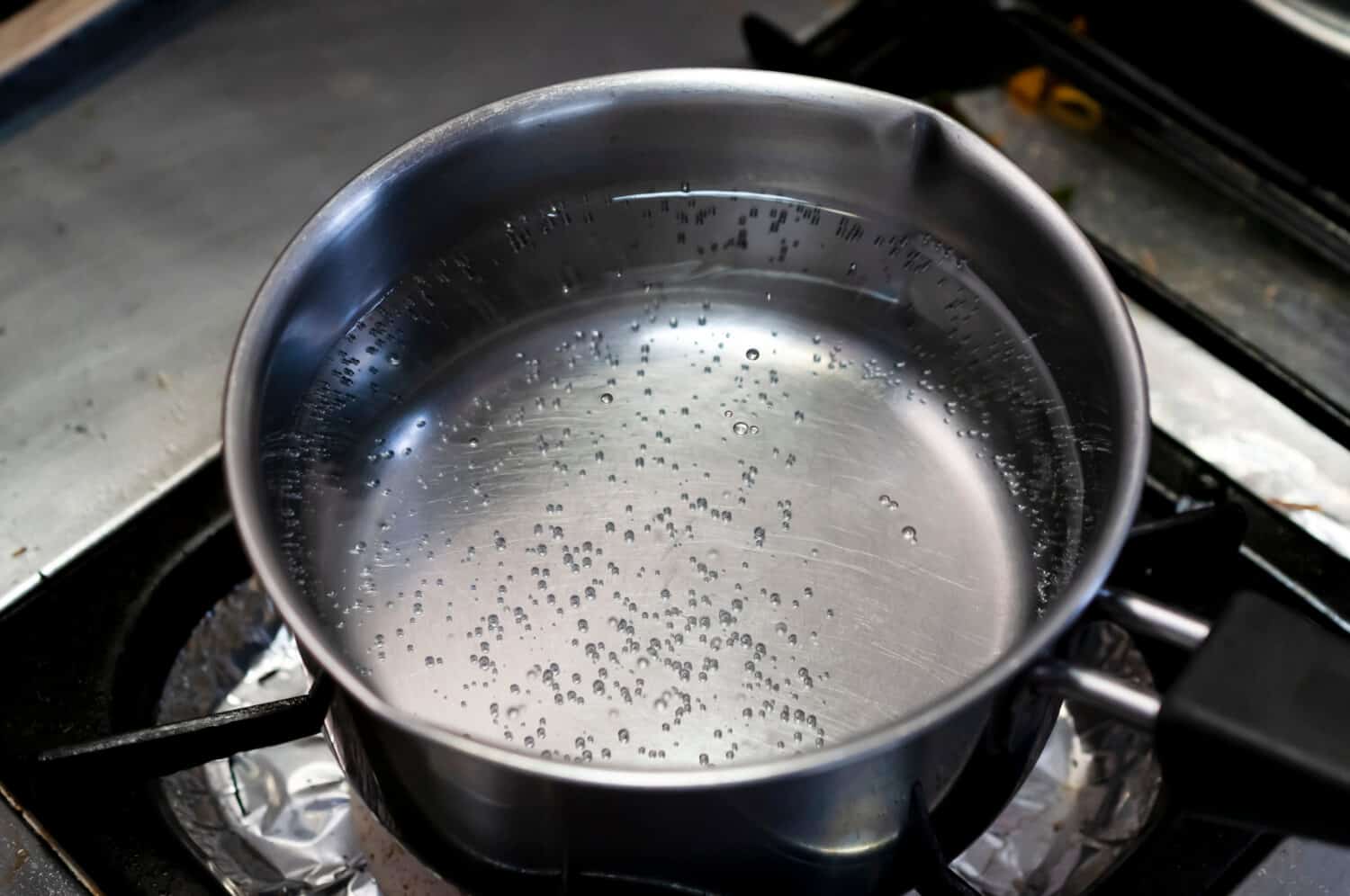Simmer and boil are common instructions in recipes. While both cooking methods involve heating up water, they are not the same. Knowing the difference and knowing when to use each method, could hold the key to the failure or success of the recipe.
Imagine you are making potato leek soup. The recipe says to simmer the ingredients to allow the flavors to develop and blend slowly. Instead, you accidentally boil the soup. As a result, the aggressive boiling causes the leeks and potatoes to fall apart, which also causes the potatoes to release starch. This turns the soup into a thick, glue-like consistency. Moreover, some of ingredients curdle. Furthermore, overcooking affects some potatoes while leaving other potatoes undercooked. The soup becomes thick, unappealing, and inedible. Simmering the soup could have prevented all these issues.
To avoid this kind of disaster, let us take an in-depth look at the differences between simmer vs. boil. How are they different? At what temperatures do each occur? And what are the benefits of each technique?
Simmer vs. Boil: What is the Difference?
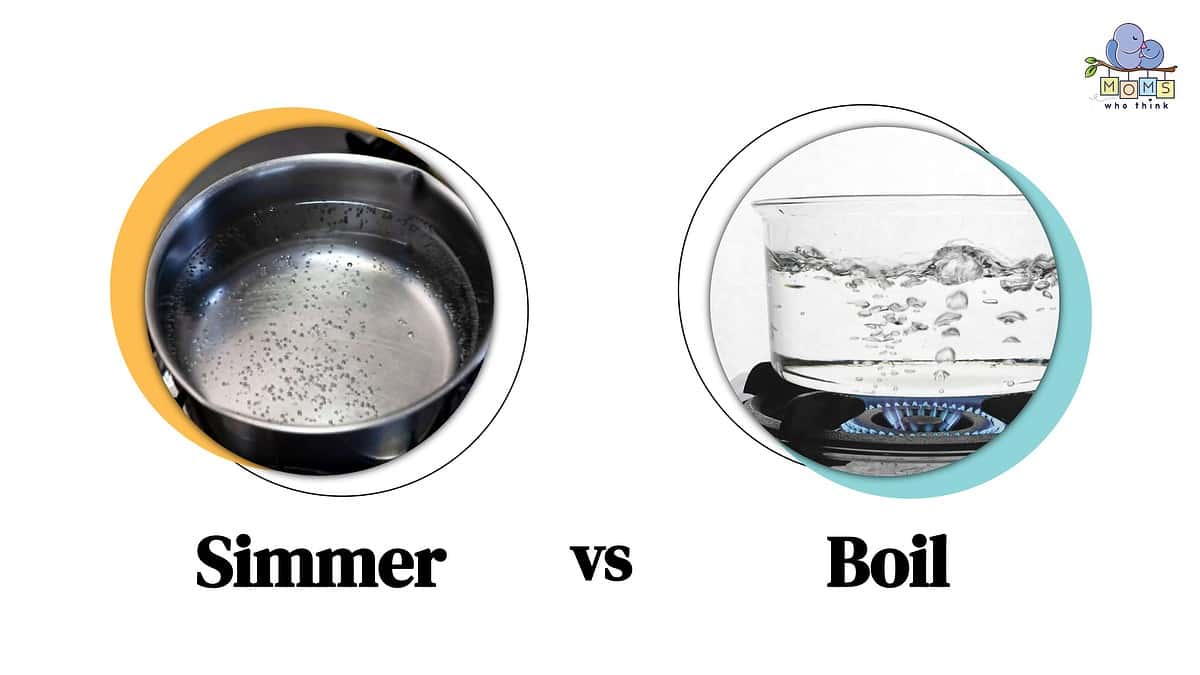
Simmering and boiling are two vastly different cooking methods. They differ in terms of temperature, intensity, and how they cook food.
| Simmer | Boil | |
|---|---|---|
| Temperature | Usually around 180°F to 190°F (80°C to 90°C). | Typically, 212°F (100°C) at sea level. |
| Water Appearance | Slow-rising bubbles that gently break through to the water's surface. | Liquid is rapidly bubbling with large bubbles that rise to the surface quickly. |
| Cooking Uses | Cooks foods slowly and evenly, especially soups, stews, sauces, and braises. | Cooks food quickly, especially pasta, eggs, and vegetables. |
| Results | Allows food to meld and break down gradually without breaking down the texture. | Suitable for cooking foods that are not easily overcooked and can be cooked rapidly. |
| Cooking Time | Slower, more gradual, which is great for recipes that need time for flavors to develop or meat to tenderize. | Shorter than simmering and excellent for smaller foods that have a high-water content. |
Simmer vs. Boil: What is a simmer?
If your recipe says to simmer, you should boil the water just below its boiling point, typically at a temperature between 180 to 190°F (80 to 90°C). The water should move slowly with no threat of overflowing the pot. Additionally, tiny bubbles should rise to surface gradually. In this gentle heating method, ingredients cook slowly.
There are three distinct kinds of simmering techniques.
- Slow Simmer – A slow simmer is the lowest heat possible with very little activity happening in the pot. This is the best simmer for stocks and braises.
- Simmer – Typically used to make soups and stews, this is the most basic simmer. Set to medium-low heat, there will be gentle bubbling inside your pot.
- Rapid Simmer – A rapid simmer has the most bubbling, but the bubbles should still be small. The medium to medium-high heat setting rapidly reduces sauces.
Simmering requires supervision of the pot, so it is usually best to leave the pot uncovered. Also, adding a lid will intensify the heat and possibly cause it to boil.
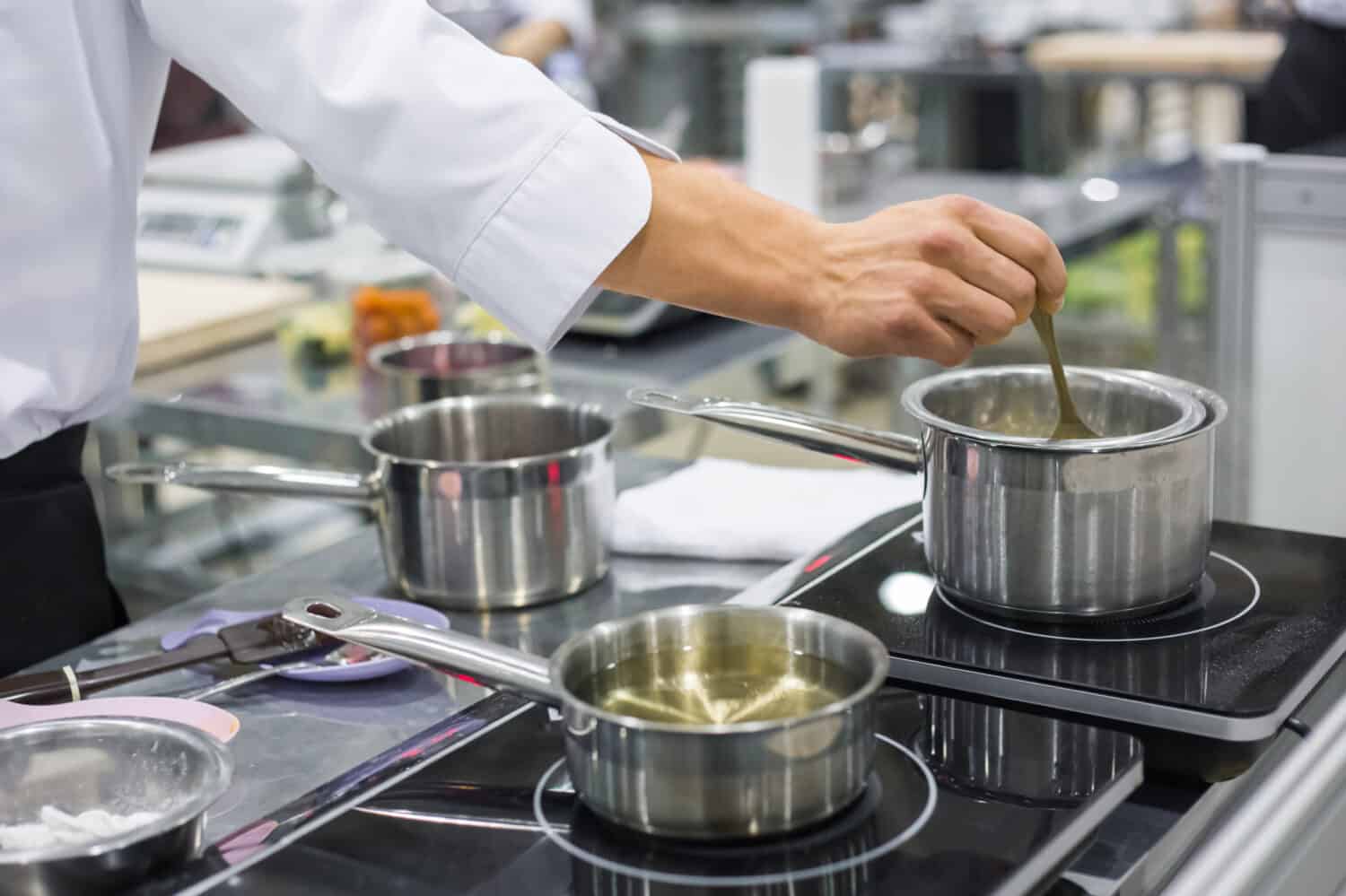
The simmer method cooks soups and stews evenly.
©Zyabich/Shutterstock.com
Simmer vs. Boil: What is a boil?
Boiling brings water to a temperature of 212°F (100°C) so that the intense heat cooks food quickly. However, various kinds of water have different boiling points, so this temperature may vary. Other liquids, like olive oil, have much higher boiling temperatures.
Water boils when the surface bubbles vigorously while the liquid beneath it churns. Additionally, there is a lot of steam. Occasionally, a recipe will call for a “rolling boil.” This means raising the temperature of the water slightly so that the movement of the water is more pronounced. As a matter of fact, the liquid should be in constant motion. Additionally, a rolling boil produces more bubbles.
It is important to note that many recipes call for water to be brought to a boil, then reduced to a simmer. Why? Reducing the heat from boiling water gives you a more even simmer. Moreover, different stovetops heat up liquids differently. For instance, a gas stove heats up faster than an electric stove, so you will reach the boiling point quickly.
Simmer vs. Boil: Foods to simmer
Now that you have mastered the art of the simmer, what can you simmer in your pot?
- Grains and legumes – Barley, farro, and quinoa's aromatic tastes benefit from simmering. Simmer beans and lentils in chilis and soups.
- Stock – When making stock, cooking it slowly at a steady temperature is best.
- Meat and Poultry – A common way to braise meat is to simmer it.
- Vegetables – Simmering is best for starchy vegetables like turnips and beets.
When you master the art of simmering, you will have one of the best cooking techniques in your arsenal. Soups, stews, and braises are some of the dishes that benefit from this slow cooking method.
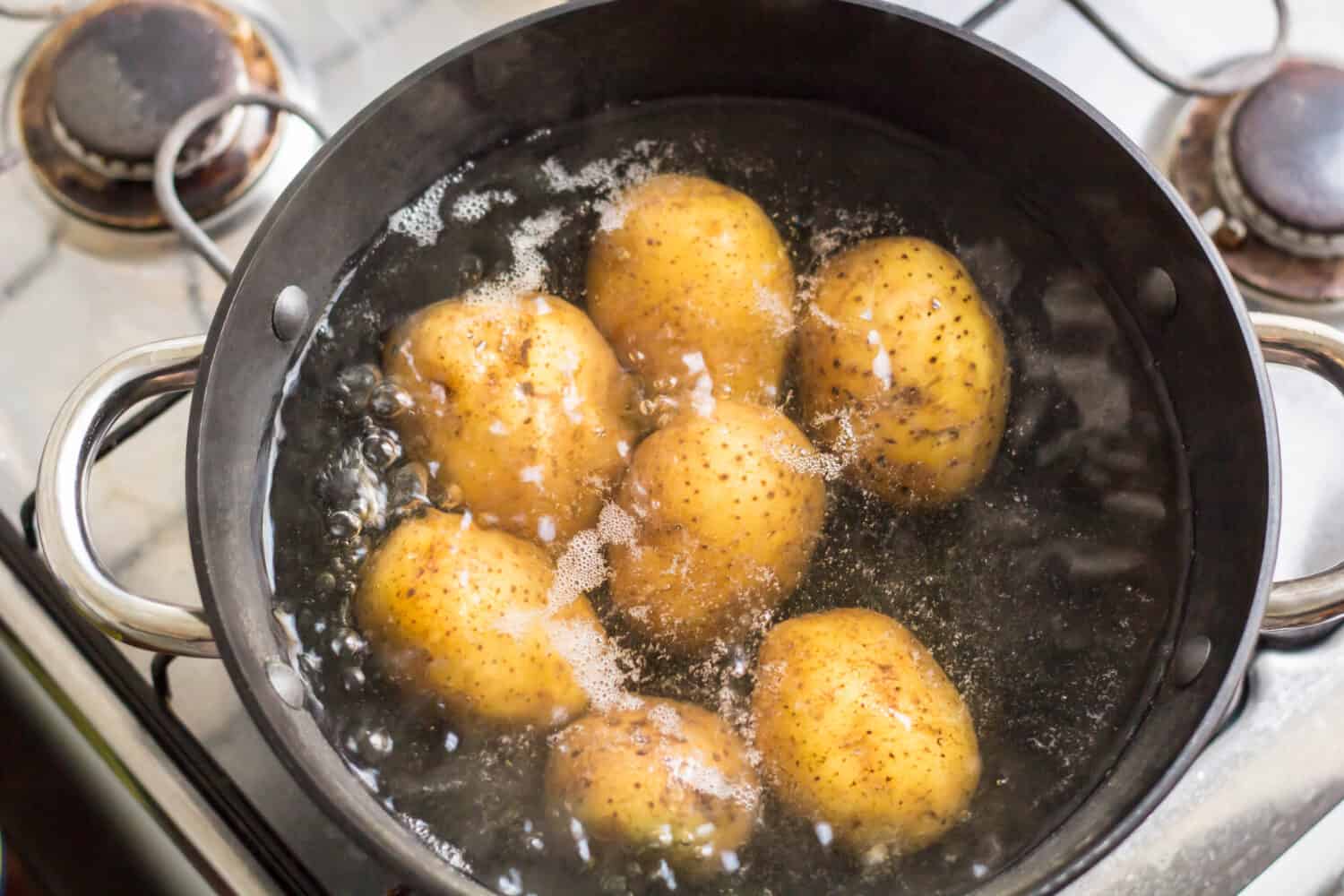
To make mashed potatoes, boil the potatoes first.
©dashtik/Shutterstock.com
Simmer vs. Boil: Foods to Boil
Boiling is an extremely versatile cooking method. Boiling is a common method for the following foods.
- Eggs – Eggs boil to soft-boiled or hard-boiled. Some people eat boiled eggs as a snack. They often appear in salads.
- Pasta – Boiling is the primary cooking method for pasta. Boil spaghetti, penne, and macaroni before using them in pasta dishes.
- Rice – Like pasta, boil rice before use in recipes. Boil white, brown, and wild rice until tender.
- Corn – Boiling is the preferred method for making corn on the cob.
- Artichokes – Boiling artichokes makes them tender and easy to use in recipes.
- Hot Dogs – Boiling is a popular and easy way to cook hot dogs.
- Seafood – Seafood boils are popular. Boil shrimp, lobster, and mussels.
- Dumplings – Boil dumplings and gnocchi until they float to the surface.
- Cabbage – Boiling cabbage with ham is a popular recipe.
- Potatoes – Eat potatoes boiled or mush them to make mashed potatoes.
Always check cooking times for individual dishes. All of these foods have different boiling times. Finally, some of these foods benefit from the addition of salt and herbs during the boiling process.
One Final Note
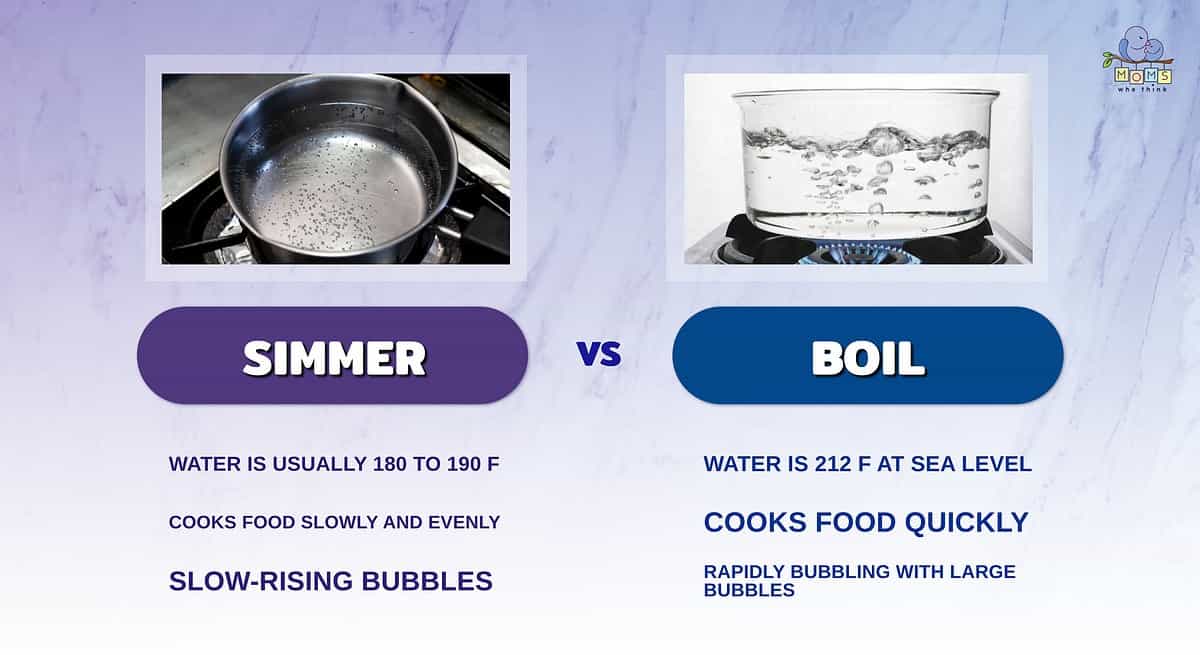
- To simmer, bring the water to a temperature of 180 to 190 degrees Fahrenheit. To boil, bring the water to a temperature of 212 F. Keep in mind that this temperature may differ if you don't live at sea level.
- Simmering food cooks it slowly and evenly. Boiling cooks a food quickly, allowing you to complete a meal in a short amount of time.
- You can identify simmering water by the slow-rising bubbles, while boiling water is characterized by rapid bubbling with large bubbles.
Understanding the difference between a simmer and a boil is one of the first and most important lessons for any cook. Once you have perfected these techniques, your cooking skills will fly to new heights. Remember that a simmer is a slow boil that brings out the delicate tastes of soups, stews, and braises. On the other hand, a good boil is essential for blanching vegetables and cooking dishes like pasta. Mastering the art of simmer vs. boil is the first step to becoming an excellent cook.
Print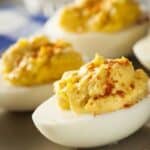
Deviled Eggs
Ingredients
- 6 eggs
- Dash of salt
- Dash of pepper
- 1/4 teaspoon mustard
- 1 1/2 to 2 1/2 Tablespoons mayonnaise
- Paprika
Instructions
Boil eggs:
- Place the eggs in a saucepan, and cover them with COLD tap water (enough to just cover all the eggs).
- Bring to a rolling boil over high heat. Keep an eye on the eggs, and as soon as the water is at a rolling boil immediately reduce the heat to a low-medium boil and cook an additional 10 minutes.
- Remove from heat and very quickly place the eggs under ice-cold water or in a bowl of iced water to chill quickly and keep the yolk a nice yellow color.
- Chill for a few minutes in the cold water until the egg is completely cooled. Crack each egg on all sides and peel.
Deviled eggs:
- Hard boil eggs. Cool for 10 minutes and remove shells. Cut into halves lengthwise and remove yolk, place yolk into a small bowl.
- Cream yolk, salt, pepper, mustard, and mayonnaise.
- Put 1/2 teaspoonful into egg whites and garnish with paprika.
The image featured at the top of this post is ©kariphoto/Shutterstock.com
